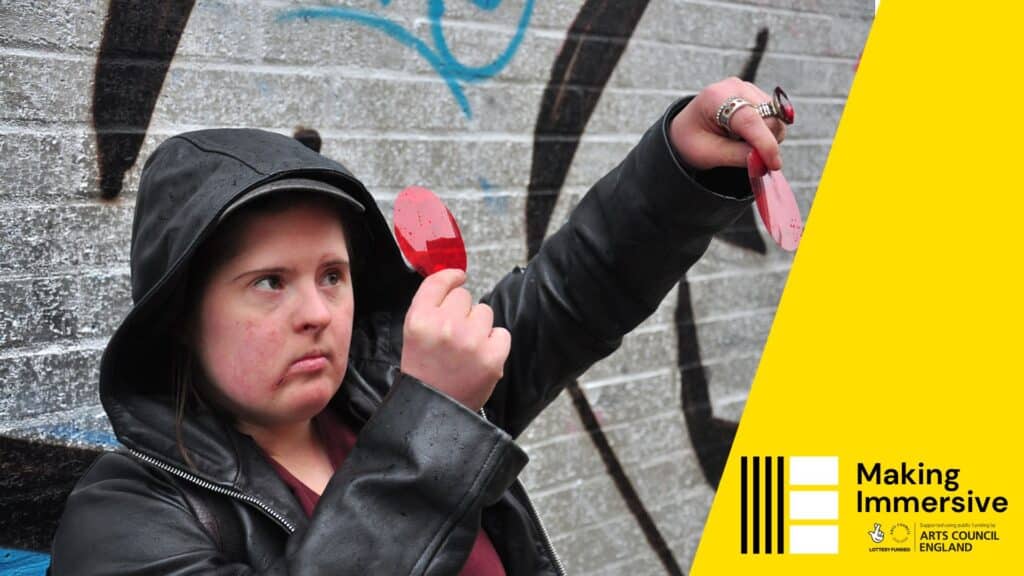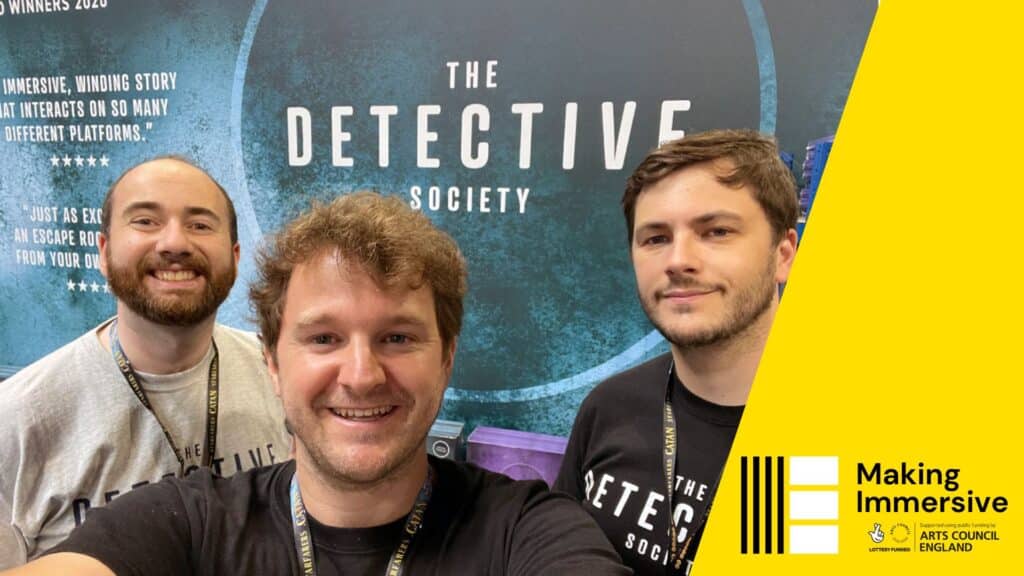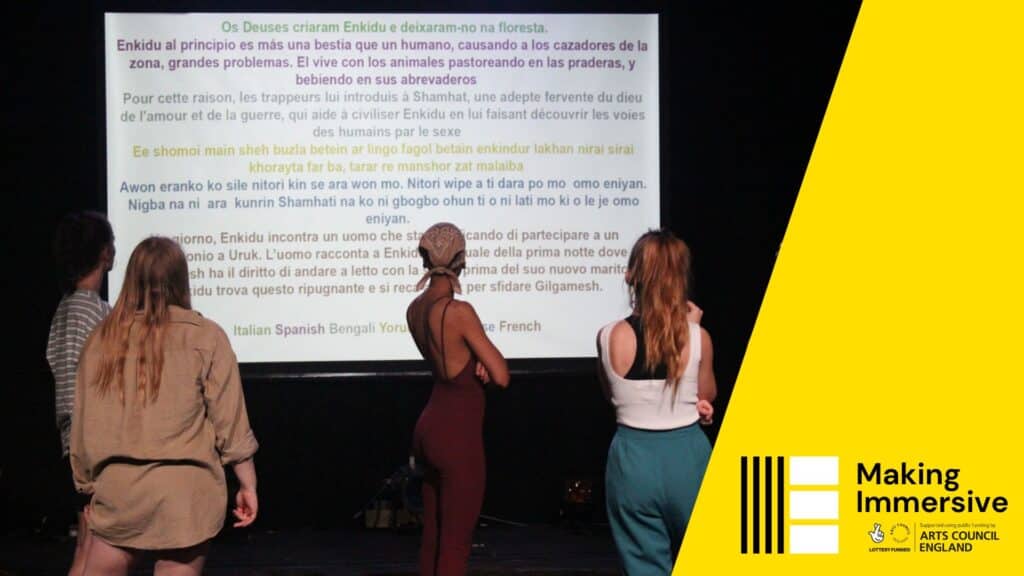Access All Areas have been making immersive performances with learning disabled and autistic (LDA) performers from our home in East London and nationally since 2013. Access All Areas are a company of 22 associate artists (LDA artists) who have all undergone a 2-year Performance Making diploma programme at the Royal Central School of Speech and Drama. Our work is always devised, taking inspiration from the artist’s personal experiences and using a broad range of immersive structures to bring those stories up and close to the audience.
Our work stems from my experience watching audience’s reactions to artists’ perceived ability and cognition when performing on a traditional stage. I felt that traditional theatre where the performers ‘perform’ to a paying audience to be entertained kept the unconscious bias alive, with the segregation that most of the artists experience on a daily basis being left unchallenged. Comments such as ‘I didn’t know I was allowed to laugh’ and ‘they looked like they were having a good time’ infuriated me as I wanted a genuine conversation with the audience about the stories and themes prevalent in the work.
So by breaking the fourth wall and creating new rules to the performance game, we enable artists to reclaim their agency and play with the audience’s perceptions. We have done this in numerous productions which include:
- A collaboration with Retz Theatre (Currently Rift) ‘The Trial’
- The audio headphone walking show, ‘Eye Queue Hear,’
- The large scale production, ‘Madhouse re:exit’
- Our live/VR collaboration with dreamthinkspeak, ‘Unreal City’
- Our co-production with associate artist Charlene Salter, audio app walking performance, ‘The Interrogation.’
An important aspect of our work is ensuring LDA audiences experience the work. Many LDA people do not access performance regularly, especially performance that has addressed audience access from inception. Sometimes LDA audiences have experienced discrimination due to negative comments on their communication during shows. Enabling inclusive audiences to experience the work together can help bridge the divide and foster a sense of connection and community amongst audiences too.
I am going to split the ‘how to’ information here into 2 sections based on our experience of making multiple immersive experiences. Firstly, working with learning disabled and autistic artists and secondly, engaging learning disabled and autistic people as audiences.
Access All Areas have 22 associate artists that have all received performance training and have various experiences in immersive performances. There are limited opportunities for LDA people to receive performance training due to multiple systemic barriers that I won’t go into here. There are other companies around the UK that also offer similar opportunities and have a company of artists.
Working with LDA Artists
If you are employing a LDA artist in your show then here are some things to think about:
- Devising. It can be helpful for the artist to be involved in the development of the show. This can be in creating characters or contributing to the story development and writing of the performance as co-creators. This enables agency and authenticity for people whose voices are rarely heard.
- When creating material from autobiographical experiences, some artists may find it helpful to create a distance to their own experiences, especially if they are difficult to re-perform each night. So either creating a different name or persona may help. This distance may also help if multiple people are playing the same role in a rotating cast.
- Some immersive performances are exhausting, so if we can avoid running around from place to place, and enable performance moments that repeat and can take place in fewer places, that can help. Scheduled breaks are important too.
- Many of the Access All Areas artists have Access to Work funding to pay for Creative Support Workers to support them during rehearsals and in the show. The Access to Work process through the Department for Work and Pensions is a tricky process to navigate (and a potential dystopian immersive experience to be made!).
- As employers we have a duty to support each artist’s ‘access rider’ or ‘work with me’ plan to meet their access needs, so creating an access budget is important.
- It is important the Creative Support Workers do not perform in the show. They don’t have to be static and hidden when the show is on but it is important they are not a replacement for an actor or stage manager.
Working with LDA Audiences
For audiences, here are a few ideas to make your immersive experience accessible to them:
- Visual guide. Create a visual guide that allows the audience to understand in advance what the scenes will entail. This includes noise, bright lights, surprises, interaction as well as simple plot and characters. Audience members can then choose if they want to step out of any scenes in advance.
- Audiences should be offered ear defenders, fidget toys and sunglasses at box office if they so need for the route.
- The route needs to be fully accessible for wheelchair users. You should avoid policies which restrict the number of wheelchair users per group.
- Chairs in the space to sit down on occasion can be helpful.
- Full access training for all FoH and production staff
- Pre and post show workshops can be offered to groups of LDA audiences to engage in themes of the show.
- Scenes should take place on one level. If there is a lift in the venue, multiple levels can be used, but do avoid lots of going up and down stairs on numerous occasions.
- Performances should be episodic, follow a route and not be free flowing/open world. There should be no place to get lost. People can also decide to step out of an experience in advance if it will be triggering for them.
- Performances can be relaxed, or extra ‘live’, welcoming different people’s physical and vocal responses to the work. Audience members can leave if they want to and there are interactions between audience and performer to break down the fourth wall. We discourage audiences from negatively commenting on other audience’s reactions. This can be briefed at the beginning, in a creative way that creates possibilities for fun.
- Run familiarisation/touch tours before the show for those who want to experience the set design in advance of the show. Although a part of the pre and post show workshops, offer additional tours for those who are not taking part in those.
- Offer a signed (BSL) interpreted show and audio description of the performance.
This is not an exhaustive list for engaging LDA artists and audiences into your work but we hope that it helps to steer your thinking. It is important that immersive performance doesn’t become a sector that discriminates against anyone due to a lack of forethought and planning. There are always creative solutions to any perceived need so remember to always have fun in the process working it out! And finally, the points listed here can be helpful to all artists and audiences irrespective of disability.





